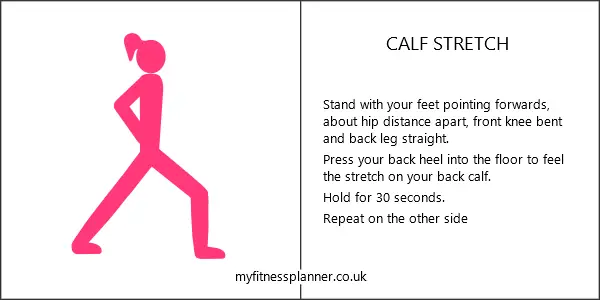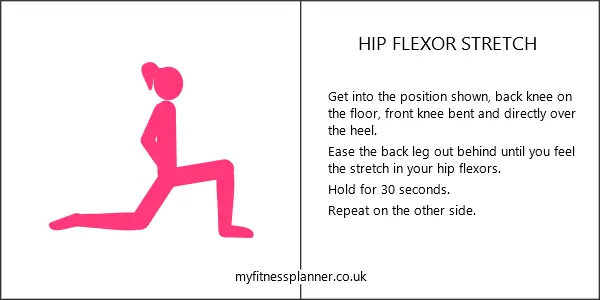Keep your whole body flexible with this full body stretching routine. Flexibility is an important component of fitness and you should always allow time for stretching in your schedule. If you can’t fit a stretch in at the end of your workout, it’s fine to stretch any other time that your muscles are warm. The instructions below give you all the technique points to ensure that the target muscle is stretched properly. For best results, do the routine at least 3 times a week.
Full body stretching routine
Do this stretching routine any time that your muscles are warm – either after a workout or after any other activity. Aim to do the routine every day for maximum increases to flexibility. More detailed instructions for the stretches are below.

Why stretching is important
It’s not good to have tight muscles. This is because they will restrict movement and be more likely to suffer tears and strains. In order to keep our muscles flexible, we need to stretch them to their full length regularly. For most people, this isn’t something that happens in normal everyday activity. In fact, many people have jobs in which they don’t move much at all, or use the same muscles in repetitive movements. Regular stretching will therefore help to stop muscles getting tight and problems developing.
Benefits of stretching

Maintenance vs developmental stretching
The difference between maintenance and developmental stretching is very simple. With maintenance stretching, you’re aiming to maintain your muscle length (to stop your muscles from getting shorter and tighter). With developmental stretching you’re aiming to increase your muscle length (to become more flexible than you currently are).
There are some advanced stretching techniques for developmental stretching, such as PNF stretching. However, for a quick stretching routine at home you only need to be concerned with how long you hold stretches for. If you want to maintain muscle length, then hold the stretch for 15-20 seconds. To develop your flexibility, hold the stretch for at least 30 seconds.
The stretch reflex
If muscles stretch beyond their maximum length, then they tear. So they have a protective mechanism which detects stretching and fires a reflex action to prevent stretching too far. When you’re doing developmental stretching, you may find that you initially feel a resistance to the stretch that gradually eases. This is the stretch reflex relaxing. If this happens, you can – very carefully – try to stretch a little further.
Safety notes
Your muscles should be warm before you stretch. This could be from a workout, from general activity such as walking or household chores, or from doing warm up exercises, like these.
You need some sort of cushioning for the floor exercises, ideally an exercise mat. See an exercise mat buying guide here.
Stretches should never be forced. You should stretch to the point where you feel a little tension and then hold that position for at least 30 seconds.
Exercise instructions










Get the full body stretching routine PDF printable
Sign up for My Fitness Planner updates and get the free printable download link e-mailed to you:
After you sign up, you’ll get 2 e-mails, one will have a link to your printable download and the other will be a welcome e-mail.
If the e-mails haven’t turned up within a few minutes, please check your junk folder, as some service providers have very strict filters.



